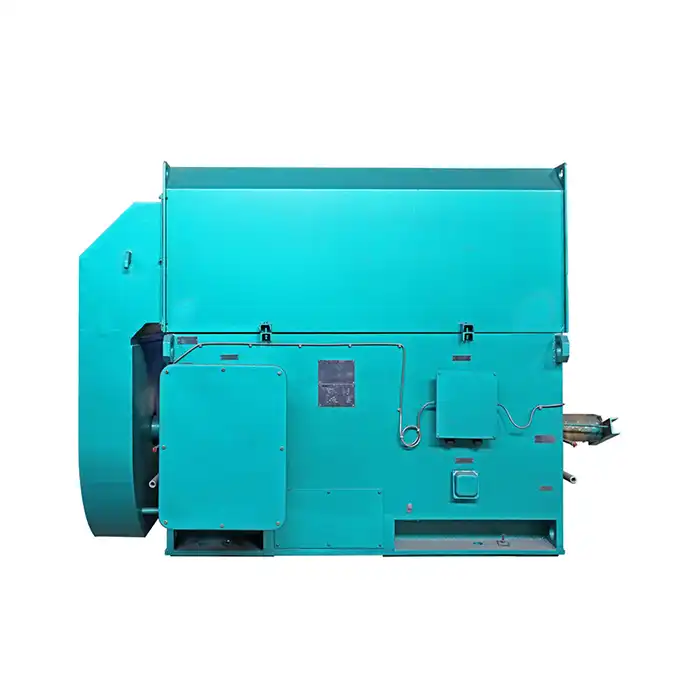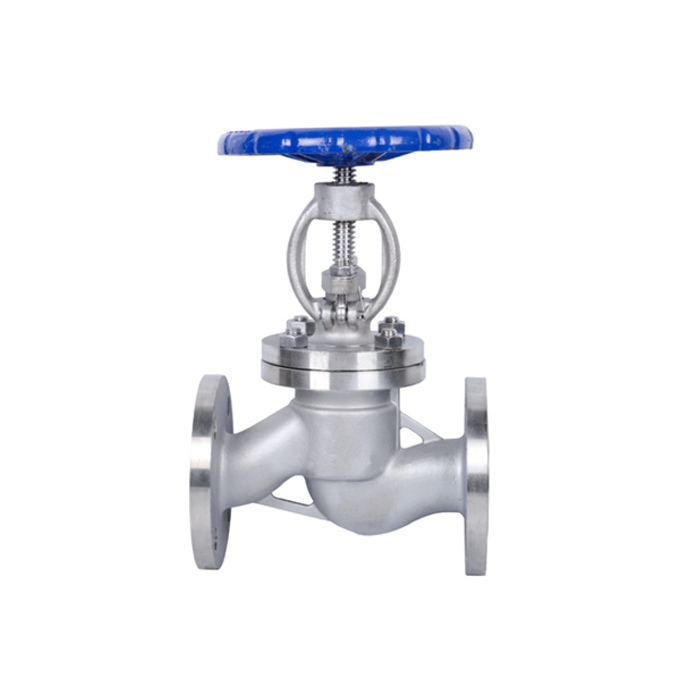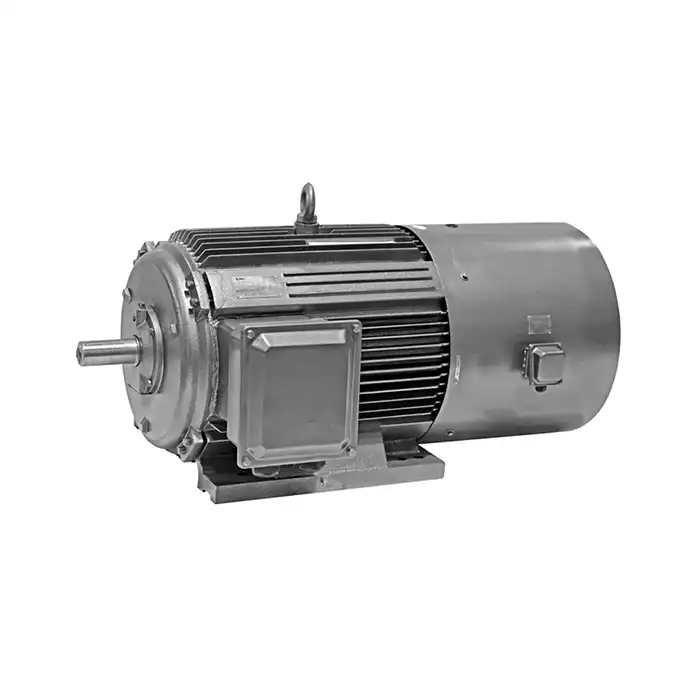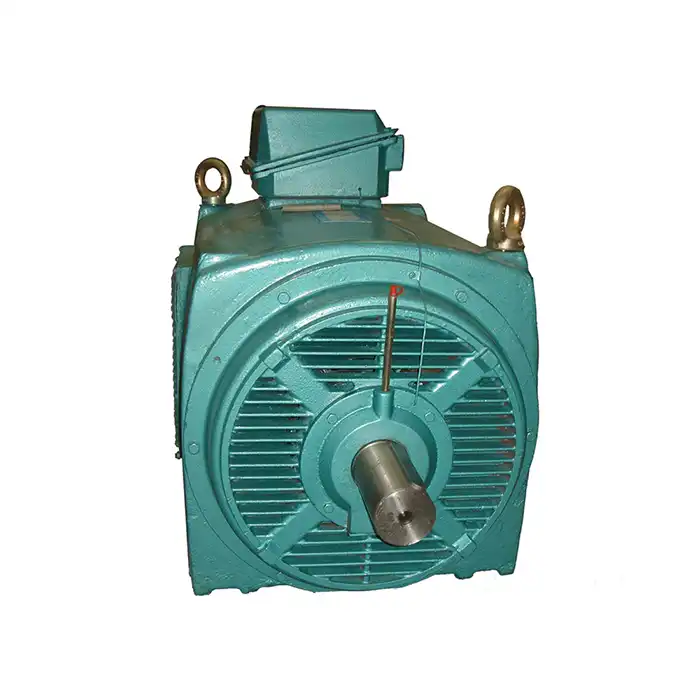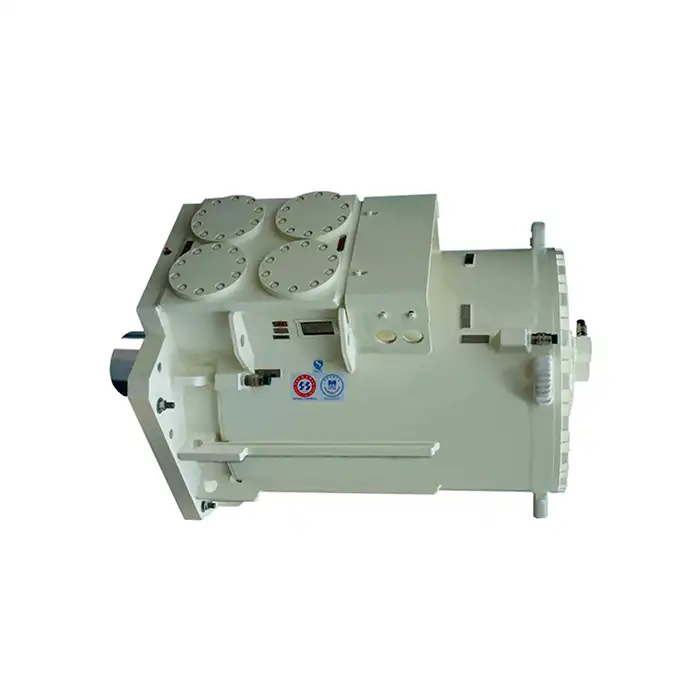How to Select the Correct Explosion Proof AC Motor for Class I Division 1 Locations
Selecting the right explosion proof ac motor for Class I Division 1 locations is crucial for ensuring safety and compliance in hazardous environments. These motors are designed to contain internal sparks and prevent the ignition of flammable gases or vapors present in the surrounding atmosphere. In this comprehensive guide, we'll walk you through the essential factors to consider when choosing an explosion proof AC motor for Class I Division 1 areas.
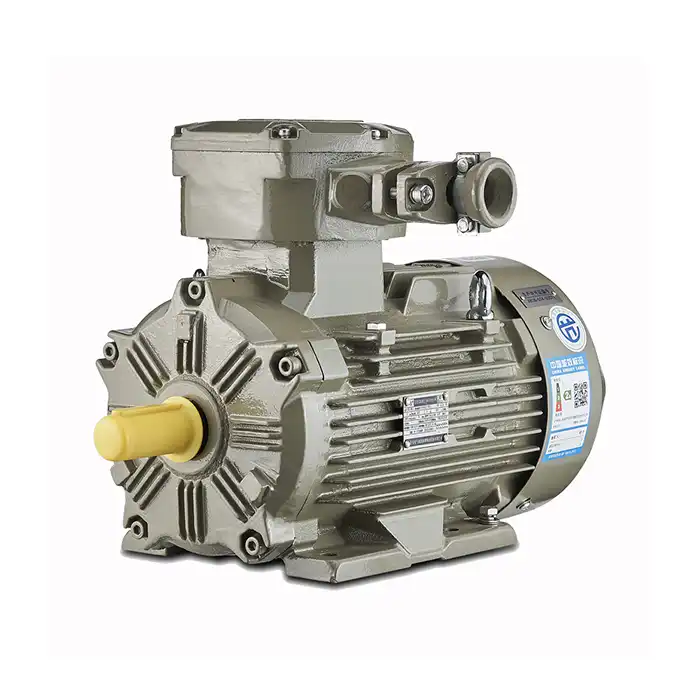
| Power range: | 0.55 kW to 630 kW |
| Voltage: | 380V, 400V, 415V, 660V, 1140V (customizable) |
| Frequency: | 50Hz |
| Poles: | 2, 4, 6, 8 |
| Protection class: | IP55, IP56, IP65 |
| Insulation class: | F or H |
What Certifications Are Required for Class I Div 1 Explosion Proof AC Motors?
When it comes to explosion proof AC motors for Class I Division 1 locations, proper certification is non-negotiable. These certifications ensure that the motor meets stringent safety standards and is suitable for use in hazardous environments.
Understanding ATEX and IECEx Certifications
ATEX and IECEx are two of the most recognized international certifications for explosion proof equipment:
- ATEX: This European Union directive sets standards for equipment used in potentially explosive atmospheres. ATEX certified motors are marked with the Ex symbol and specific codes indicating the type of protection.
- IECEx: This global certification system provides a single standard for the testing and certification of electrical equipment used in explosive atmospheres.
Both ATEX and IECEx certifications are widely accepted and often required for explosion proof ac motors used in Class I Division 1 locations.
North American Certifications: UL and CSA
In North America, explosion proof motors typically require certifications from recognized testing laboratories:
- UL (Underwriters Laboratories): UL listed explosion proof motors meet strict safety standards for use in hazardous locations in the United States.
- CSA (Canadian Standards Association): CSA certified motors are approved for use in hazardous locations in Canada.
When selecting an explosion proof AC motor for Class I Division 1 areas, ensure it carries the appropriate UL or CSA certification for your specific location and application.
Hazardous Area Classification: Understanding NEC/CEC Requirements for Motors
The National Electrical Code (NEC) in the United States and the Canadian Electrical Code (CEC) in Canada provide guidelines for classifying hazardous areas and selecting appropriate electrical equipment, including explosion proof ac motors.
Class I Division 1 Locations Defined
Class I Division 1 locations are areas where flammable gases or vapors are or may be present in the air in quantities sufficient to produce explosive or ignitable mixtures. These locations are characterized by:
- The presence of ignitable concentrations of flammable gases or vapors under normal operating conditions
- Frequent maintenance or repair work that may release ignitable concentrations
- Breakdown or faulty operation of equipment that could release ignitable concentrations
Gas Groups and Temperature Classifications
When selecting an explosion proof AC motor for Class I Division 1 locations, you must consider both the gas group and temperature classification:
- Gas Groups: Class I substances are divided into Groups A, B, C, and D based on their ignition properties. Group A (acetylene) is the most easily ignited, while Group D (propane) is the least easily ignited.
- Temperature Classifications: These range from T1 to T6, with T1 being the highest allowable surface temperature (450°C) and T6 being the lowest (85°C).
Ensure that the explosion proof ac motor you select is rated for the specific gas group and temperature classification of your hazardous area.
TEFC vs. XP Enclosures: Which Is Best for Class I Div 1 Environments?
When considering motor enclosures for Class I Division 1 locations, two common options are Totally Enclosed Fan-Cooled (TEFC) and Explosion Proof (XP) enclosures. Understanding the differences between these enclosures is crucial for selecting the appropriate explosion proof ac motor.
Totally Enclosed Fan-Cooled (TEFC) Enclosures
TEFC motors are designed to prevent the free exchange of air between the inside and outside of the motor enclosure. Key characteristics include:
- A fan mounted on the motor shaft to circulate cooling air over the motor frame
- Protection against dust and water ingress
- Suitable for many industrial applications, but not inherently explosion proof
While TEFC motors offer good protection in many environments, they are not suitable for Class I Division 1 locations without additional modifications.
Explosion Proof (XP) Enclosures
Explosion proof enclosures are specifically designed for use in hazardous locations. These enclosures:
- Contain any internal explosion and prevent the ignition of surrounding flammable gases or vapors
- Are constructed with thicker walls and tighter tolerances to withstand internal pressure
- Feature flame paths that cool escaping gases below the ignition temperature of the surrounding atmosphere
For Class I Division 1 locations, an explosion proof ac motor with an XP enclosure is the appropriate choice. These motors are built to withstand internal explosions and prevent the propagation of flames to the external environment.
Selecting the Right Enclosure
When choosing between TEFC and XP enclosures for Class I Division 1 environments:
- Always opt for an XP enclosure certified for Class I Division 1 use
- Consider the specific gas group and temperature classification of your hazardous area
- Ensure the motor meets all relevant certifications and standards
Remember, while TEFC motors are suitable for many industrial applications, they do not provide the necessary protection for Class I Division 1 locations without significant modifications.
Additional Considerations for Explosion Proof AC Motors
When selecting an explosion proof ac motor for Class I Division 1 locations, consider these additional factors:
- Voltage and Power Requirements: Ensure the motor's voltage (380V, 660V, 415V, 380/660V, 660/1140V) and power range (0.55-630 kW) meet your application needs.
- Efficiency Ratings: Look for motors with high efficiency ratings (IE2, IE3, or IE4) to optimize energy consumption.
- Bearing Quality: Consider motors with high-quality bearings (e.g., SKF, NSK, FAG) for extended service life.
- Environmental Factors: Account for ambient temperature ranges and altitude requirements in your specific application.
- Maintenance and Serviceability: Choose motors that allow for ease of maintenance while maintaining their explosion proof integrity.
By carefully considering these factors, you can select an explosion proof ac motor that not only meets safety requirements but also provides optimal performance and reliability in your Class I Division 1 environment.
Conclusion
Selecting the correct explosion proof AC motor for Class I Division 1 locations requires a thorough understanding of hazardous area classifications, certification requirements, and motor specifications. By carefully considering factors such as certifications, gas groups, temperature classifications, and enclosure types, you can ensure the safety and compliance of your industrial equipment in these challenging environments.
At Shaanxi Qihe Xicheng Electromechanical Equipment Co., Ltd., we specialize in providing high-efficiency, low-energy consumption power equipment solutions tailored to your specific needs. Our expertise extends across various industries, including manufacturing, process control, HVAC, energy, and utilities. Whether you're in industrial automation, power generation, or water treatment, we have the knowledge and products to meet your explosion proof motor requirements.
Don't leave the safety of your Class I Division 1 operations to chance. Contact our team of experts today at xcmotors@163.com to discuss your specific explosion proof AC motor needs. Let us help you select the right motor that ensures both safety and optimal performance in your hazardous environment.
References
1. National Fire Protection Association. (2020). NFPA 70: National Electrical Code.
2. Occupational Safety and Health Administration. (2019). Hazardous (Classified) Locations.
3. International Electrotechnical Commission. (2018). IEC 60079: Explosive atmospheres.
4. American Petroleum Institute. (2021). API RP 500: Recommended Practice for Classification of Locations for Electrical Installations at Petroleum Facilities.
5. Underwriters Laboratories. (2020). UL 674: Standard for Electric Motors and Generators for Use in Hazardous (Classified) Locations.
6. Canadian Standards Association. (2019). CSA C22.2 No. 145: Electric Motors and Generators for Use in Hazardous Locations.



